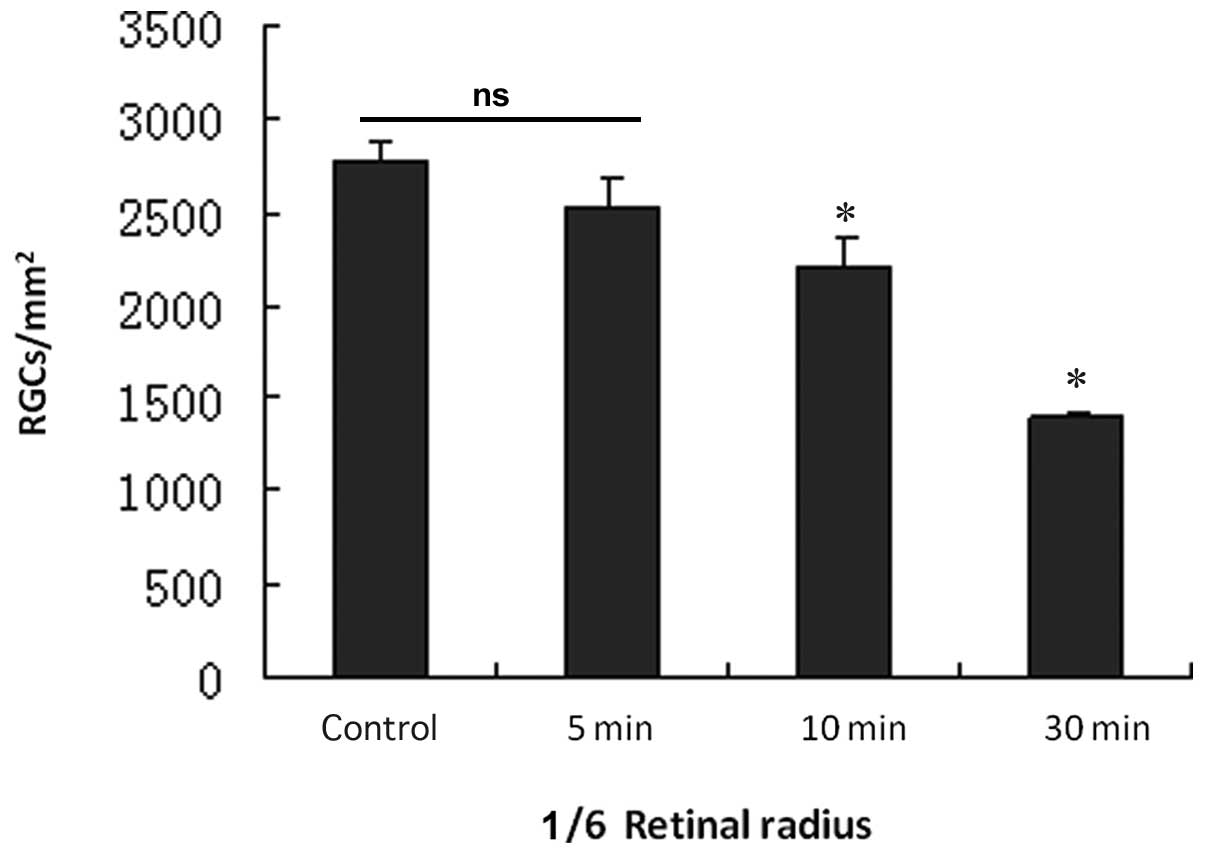Evaluation of a partial optic nerve crush model in rats
- Authors:
- Published online on: June 22, 2012 https://doi.org/10.3892/etm.2012.619
- Pages: 401-404
Metrics:
Total
Views: 0 (Spandidos Publications: | PMC Statistics:
)
Total PDF Downloads: 0 (Spandidos Publications: | PMC Statistics:
)
Abstract
This study was performed to determine whether a partial optic nerve crush (PONC) model in rats is effective and reliable for the study of optic nerve protection and regeneration. Bilateral superior colliculus (SC) retrograde 1,1'-dioctadecyl-3,3,3',3'-tetramethylindocarbocyanine perchlorate (DiI) labeling of retinal ganglion cells (RGCs; n=3) and unilateral SC retrograde labeling of RGCs (n=3) were performed in adult Sprague-Dawley (SD) rats and the results were compared with the bilateral and unilateral SC retrograde-labeled RGCs. Another 40 adult SD rats, three days after bilateral SC retrograde DiI labeling of RGCs underwent crushing with a non‑invasive vascular clip (40 gram power) 1 mm behind the right optic nerve head for 5, 10 and 30 sec (n=10 each), and a sham-operated control group (n=10) was used as a control. The retinas of all 40 rats were flattened by four radial cuts, mounted vitreal side‑up on gelatin-coated slides, and the number of labeled RGCs was counted in four distinct regions per retinal quadrant at three different eccentricities of 1/6, 3/6 and 5/6 of the retinal radius three days later. Bilateral SC retrograde DiI injection labeled the majority of normal RGCs, while unilateral SC injections only labeled a small part of the RGCs; the majority of RGCs were not labeled. In the mild crush (5 sec) injury group, the bilateral SC retrograde DiI injection labeled the majority of RGCs. The RGC densities at 1/6, 3/6 and 5/6 of the retinal radius showed no significant difference compared with the RGC densities at the corresponding region of the retinal radius in the sham-operated control group (P=0.734, 0.461, 0.273, respectively). In the moderate crush injury (10 sec) group, the number of labeled RGCs was significantly lower compared to that of the sham-operated control group, and the RGC densities at 1/6, 3/6, 5/6 of the retinal radius were significantly lower compared to the RGC densities at the corresponding retinal radius in the sham-operated control group (P<0.001). In the severe crush injury (30 sec) group the number of labeled RGCs was significantly decreased, and the labeled RGCs were not observed in the region at 5/6 of the retinal radius. The RGC densities at 1/6 and 3/6 of the retinal radius were significantly lower compared to the RGC densities at the corresponding retinal radius region in the sham-operated control group (P<0.001). Compared with the mild and severe optic nerve crush injury models, the moderate crush injury model is more suitable for the study of optic nerve damage and regeneration.















